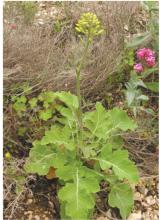
The Agricultural (Agric) Ecology project, which has been in operation since 2018 by the National Agricultural Extension and Research Services (ABU, Zaria), aims to improve productivity and living standards of its target communities through the deployment of innovations in sustainable agriculture and natural resources management.
Lafarge Africa, a subsidiary of building materials giant LafargeHolcim, says the Agric Ecology project has impacted positively on food security and market competitiveness in the participating communities, has empowered over 5,000 resource-poor farmers, enhanced job and self-employment opportunities for young people and women, and augmented the sustainable natural resource management efforts of the communities.
The project covers over 20 communities in the Nigerian state of Gombe including Gongila, Jugol-Barkono, Badabdi, Ashaka-Gari, Jalingo, Feshingo, Bajoga, Sangaru, Lariski, Bage and Darumfa, which are located in the Funakaye local government area.
Lafarge Africa has also initiated a five-year project to improve the management of the Maiganga Coal Mine water via distribution and discharge through a constructed wetland system in the Akko and Billiri local government areas of Gombe State. The project is being implemented with the approval of the Federal Ministry of Environment to improve on the acid mine drainage and entrench a biodiversity hotspot in an arid area.
Wetlands are expanses of land - incuding mangroves, saltwater estuaries, paddies, freshwater rivers, peatlands, lakes and marshes - either completely covered or partially submerged in water for most of the year. They support a wide range of aquatic and terrestrial animals as well as plants and crops. Wetlands also play a critical role in storing and cleaning water, saving cities billions of dollars in building and running water treatment plants.
Constructed wetlands, such as Lafarge’s Maiganga Wetland Project, are now widely used for water treatment. The comapy says the system and the entire process relies on natural dynamics to achieve water purification. It adds that constructed wetlands are becoming very important given that 35% of the world’s natural wetlands have disappeared since 1970 taking with them many forms of plant and animal species.
The construction work on the Maiganga Wetland system has finished and the planting of trees 60% completed (afforestation of the surrounding and population of the wetland with prescribed plants). The project has planted over 70,000 plants on six hectares of land. Pump installations have been tested and are running optimally. Apart from water quality enhancement, Lafarge Africa says that in the long term the project will improve biodiversity and microclimate conditions in the local area.
"Lafarge Africa and the communities around Maiganga are immensely proud of the contribution the wetland will make to achieving the global target of the LafargeHolcim group to reduce its carbon footprint by 2030," stated Folashade Ambrose-Medebem, communications, public affairs and sustainable development director at Lafarge Africa.
Lafarge Africa says that the Magainga wetland will also deliver concrete economic benefits to over 2,000 residents of Maiganga and its immediate surroundings. The irrigation system that is being constructed will enable all year round farming against the practice of farming only during the farming season. AshakaCem will furthermore support the Maiganga farmers with the methodology and skills to optimise the new cultural practice of all-year farming. Ashaka Cement, a Lafarge company, is in a contractual engagement with the National Agricultural Extension and Research Agency (ABU, Zaria) to work with the farmers on farming techniques that maximise yields. Over 1000 livestock will also have improved access to water.
The Maiganga Wetlands and biodiversity area will also grow economic crops such as mangoes and cashews, contributing to the overall rehabilitated areas of the Maiganga coal mine site.
Lafarge Africa adds that it is also deploying regenerative agriculture by leveraging conservation and rehabilitation to food and farming systems. "In Gombe state 500 hectares of land is contributing to sustainable food production," commented Ambrose-Medebem. "We are deploying greenhouse farming and supporting local farmers with skills inclusive of contemporary farming techniques."









